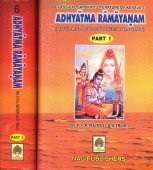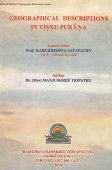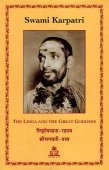Rashtriya, Rāṣṭriya, Rāṣṭrīya: 13 definitions
Introduction:
Rashtriya means something in Hinduism, Sanskrit, the history of ancient India, Marathi, Hindi. If you want to know the exact meaning, history, etymology or English translation of this term then check out the descriptions on this page. Add your comment or reference to a book if you want to contribute to this summary article.
The Sanskrit terms Rāṣṭriya and Rāṣṭrīya can be transliterated into English as Rastriya or Rashtriya, using the IAST transliteration scheme (?).
Alternative spellings of this word include Rashtriy.
India history and geography
Source: Cologne Digital Sanskrit Dictionaries: Indian Epigraphical GlossaryRāṣṭriya.—(IE 8-3; LL; HD), same as Rāṣṭrika, ruler of a district or province; a provincial governor. Cf. Ep. Ind., Vol. VIII, p. 43; Pāṇini, IV. 2. 93; Mahābhārata, Śānti-parvan, 85. 12. Note: rāṣṭriya is defined in the “Indian epigraphical glossary” as it can be found on ancient inscriptions commonly written in Sanskrit, Prakrit or Dravidian languages.
--- OR ---
Rāṣṭrīya.—(IE 8-3), same as Rāṣṭriya; a provincial governor. Note: rāṣṭrīya is defined in the “Indian epigraphical glossary” as it can be found on ancient inscriptions commonly written in Sanskrit, Prakrit or Dravidian languages.

The history of India traces the identification of countries, villages, towns and other regions of India, as well as mythology, zoology, royal dynasties, rulers, tribes, local festivities and traditions and regional languages. Ancient India enjoyed religious freedom and encourages the path of Dharma, a concept common to Buddhism, Hinduism, and Jainism.
Languages of India and abroad
Marathi-English dictionary
Source: DDSA: The Molesworth Marathi and English Dictionaryrāṣṭriya (राष्ट्रिय) [or राष्ट्रीय, rāṣṭrīya].—a S Relating to a kingdom, realm, or territory.
Marathi is an Indo-European language having over 70 million native speakers people in (predominantly) Maharashtra India. Marathi, like many other Indo-Aryan languages, evolved from early forms of Prakrit, which itself is a subset of Sanskrit, one of the most ancient languages of the world.
Sanskrit dictionary
Source: DDSA: The practical Sanskrit-English dictionaryRāṣṭriya (राष्ट्रिय) or Rāṣṭrīya (राष्ट्रीय).—a. [rāṣṭre bhavaḥ gha] Belonging to a kingdom.
-yaḥ 1 The ruler of a kingdom, king; as in राष्ट्रिय- श्यालः (rāṣṭriya- śyālaḥ) Mṛcchakaṭika 9.
2) The brother-in-law of a king (queen's brother); श्रुतं राष्ट्रियमुखाद् यावदङ्गुलीयकदर्शनम् (śrutaṃ rāṣṭriyamukhād yāvadaṅgulīyakadarśanam) Ś.6.
3) An heir-apparent.
4) An officer in the kingdom; ततः संप्रेषयेद् राष्ट्रे राष्ट्रीयाय च दर्शयेत् (tataḥ saṃpreṣayed rāṣṭre rāṣṭrīyāya ca darśayet) Mahābhārata (Bombay) 12.85.12.
Source: Cologne Digital Sanskrit Dictionaries: Shabda-Sagara Sanskrit-English DictionaryRāṣṭriya (राष्ट्रिय).—mfn.
(-yaḥ-yā-yaṃ) Of or belonging to a kingdom, produced or born in it, &c. E. rāṣṭra a region, gha aff.
--- OR ---
Rāṣṭrīya (राष्ट्रीय).—mfn.
(-yaḥ-yā-yaṃ) Belonging or relating to a region or realm. m.
(-yaḥ) A king’s brother-in-law, (in theatrical language.) E. rāṣṭra a region, cha aff.
Source: Cologne Digital Sanskrit Dictionaries: Benfey Sanskrit-English DictionaryRāṣṭriya (राष्ट्रिय).—rāṣṭrīya, I. adj. Relating to a realm. Ii. (rāṣtrĭya), m. A king’s brother-in-law (in theatrical language), [Mṛcchakaṭikā, (ed. Stenzler.)] 66, 23; cf. Böhtl. ad [Śākuntala, (ed. Böhtlingk.)] 73, 1.
Rāṣṭriya can also be spelled as Rāṣṭrīya (राष्ट्रीय).
Source: Cologne Digital Sanskrit Dictionaries: Cappeller Sanskrit-English DictionaryRāṣṭriya (राष्ट्रिय).—[masculine] successor of a king, pretender; also = seq.
--- OR ---
Rāṣṭrīya (राष्ट्रीय).—[masculine] = rāṣṭriya.
Source: Cologne Digital Sanskrit Dictionaries: Monier-Williams Sanskrit-English Dictionary1) Rāṣṭriya (राष्ट्रिय):—[from rāṣṭra] mfn. relating to or dealing with a kingdom, [Pāṇini 4-3, 87 [Scholiast or Commentator]]
2) [v.s. ...] m. an heir-apparent or pretender, [Maitrāyaṇī-saṃhitā] ([varia lectio])
3) [v.s. ...] a king’s brother-in-law (also -syāla), [Mṛcchakaṭikā; Śakuntalā]
4) Rāṣṭrīya (राष्ट्रीय):—[from rāṣṭra] mfn. (cf. rāṣṭriya) belonging to a country or kingdom, [Śatapatha-brāhmaṇa]
5) [v.s. ...] m. an heir-apparent or pretender, [Maitrāyaṇī-saṃhitā]
6) [v.s. ...] a king’s brother-in-law, [Mahābhārata]
Source: Cologne Digital Sanskrit Dictionaries: Yates Sanskrit-English Dictionary1) Rāṣṭriya (राष्ट्रिय):—[(yaḥ-yā-yaṃ) a.] Of a kingdom.
2) Rāṣṭrīya (राष्ट्रीय):—[(yaḥ-yā-yaṃ)] 1. m. King’s brother-in-law. a. Of a country.
Source: DDSA: Paia-sadda-mahannavo; a comprehensive Prakrit Hindi dictionary (S)Rāṣṭriya (राष्ट्रिय) in the Sanskrit language is related to the Prakrit word: Raṭṭhia.
[Sanskrit to German]
Sanskrit, also spelled संस्कृतम् (saṃskṛtam), is an ancient language of India commonly seen as the grandmother of the Indo-European language family (even English!). Closely allied with Prakrit and Pali, Sanskrit is more exhaustive in both grammar and terms and has the most extensive collection of literature in the world, greatly surpassing its sister-languages Greek and Latin.
Hindi dictionary
Source: DDSA: A practical Hindi-English dictionaryRāṣṭrīya (राष्ट्रीय) [Also spelled rashtriy]:—(a) national; ~[karaṇa] nationalisation; ~[kṛta] nationalised.
...
Kannada-English dictionary
Source: Alar: Kannada-English corpusRāṣṭriya (ರಾಷ್ಟ್ರಿಯ):—[adjective] = ರಾಷ್ಟ್ರೀಯ [rashtriya]1.
--- OR ---
Rāṣṭriya (ರಾಷ್ಟ್ರಿಯ):—[noun] = ರಾಷ್ಟ್ರೀಯ [rashtriya]2.
--- OR ---
Rāṣṭrīya (ರಾಷ್ಟ್ರೀಯ):—
1) [adjective] of or having to do with a nation or the nation; national.
2) [adjective] affecting a (or the) nation as a whole; nationwide in scope, involvement, representation, etc.; national.
3) [adjective] patriotic or nationalist.
4) [adjective] established, maintained or owned by the federal government; national.
--- OR ---
Rāṣṭrīya (ರಾಷ್ಟ್ರೀಯ):—
1) [noun] a king; a ruler.
2) [noun] a man who is skillful inhandling administration and other public affairs of a state; a statesman.
3) [noun] a brother-in-law of a king.
4) [noun] a member of a state or nation, esp. one with a republican form of government, who owes allegiance to it by birth or naturalisation and is entitled to full civil rights; a citizen.
Kannada is a Dravidian language (as opposed to the Indo-European language family) mainly spoken in the southwestern region of India.
See also (Relevant definitions)
Starts with (+2): Rashtriya-bima-samsthana, Rashtriya-ekikarana, Rashtriya-gana, Rashtriya-gaurava, Rashtriya-janavara, Rashtriya-jhanda, Rashtriya-nikunja, Rashtriya-panchi, Rashtriya-phula, Rashtriya-prajatantra, Rashtriya-prajatantra-divasa, Rashtriya-pumji, Rashtriya-pumjipati, Rashtriya-ranga, Rashtriya-samacara-samiti, Rashtriya-vanijya-bainka, Rashtriya-vibhuti, Rashtriyakarana, Rashtriyakrita, Rashtriyasyala.
Ends with: Amtararashtriya, Amtarashtriya, Amtarrashtriya, Anyarashtriya, Atirashtriya, Bahurashtriya, Dvirashtriya, Maharashtriya, Sarvarashtriya, Svarashtriya.
Full-text: Ratthia, Anyarashtriya, Rashtrika, Svarashtriyajana, Rashtraka, Rashtri-panchhi, Rashtriya-gana, Maharashtriya, Rashtriya-vanijya-bainka, Rashtriya-ranga, Rashtri-punjipati, Rashtri-vibhuti, Rashtriy, Maharashtra, Svarashtriya, Ratthika, Bamda, Shatha.
Relevant text
Search found 17 books and stories containing Rashtriya, Rāṣṭriya, Rastriya, Rāṣṭrīya, Raṣṭriya, Raṣṭrīya; (plurals include: Rashtriyas, Rāṣṭriyas, Rastriyas, Rāṣṭrīyas, Raṣṭriyas, Raṣṭrīyas). You can also click to the full overview containing English textual excerpts. Below are direct links for the most relevant articles:
Amarakoshodghatana of Kshirasvamin (study) (by A. Yamuna Devi)
Politics and Administration (5): Law and Administration < [Chapter 3 - Social Aspects]
Need for the present study < [Chapter 1 - Kośa Literature–A Brief Survey]
Drama and the Elements of a Dramatic play < [Chapter 4 - Cultural Aspects]
Bhagavatpadabhyudaya by Lakshmana Suri (study) (by Lathika M. P.)
Mahākāvyās on Great heroes of Independence struggle < [Chapter 1 - Life and Works of Lakṣmaṇa Sūrin]
Sahitya-kaumudi by Baladeva Vidyabhushana (by Gaurapada Dāsa)
Source References < [Introduction]
Text 7.51 < [Chapter 7 - Literary Faults]
Text 8.1 < [Chapter 8 - Literary Qualities]
Gati in Theory and Practice (by Dr. Sujatha Mohan)
Analysis of technical terms: Mārga and Deśī < [Chapter 1 - Nāṭya]
The backdrop of the Srikanthacarita and the Mankhakosa (by Dhrubajit Sarma)
Who’s Who Among Our Contributors < [January – March and April – June, 1995]
India and Pakistan: Quest of Self < [July 1950]
Dr. Puttaparthi Narayanacharya < [October 1987 – March 1988]
Related products



